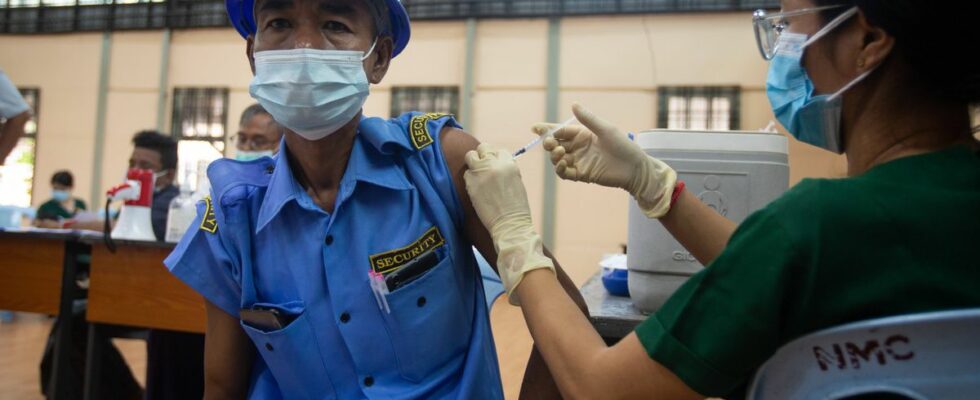In China, since the lifting in early December of the health measures of the very strict and decried “zero Covid” policy, the number of cases has exploded. Figures that are “freaking out of control”, according to Christian Bréchot. On BFMTV, the virologist and president of the Global Virus Network explains this increase in cases partly because of the spread of a new sub-variant of Omicron: BF.7. Spotted for the first time on May 13th in Belgium (then in India, France, the United States, the United Kingdom, Germany and Denmark), this strain, a sub-line of BA.5, became the majority in Beijing at the beginning of the month.
For his part, Antoine Flahault, epidemiologist and director of the Institute of Global Health at the University of Geneva, recently assured on Twitter that “BF.7 would have an R0 (virus reproduction rate) of 10 to 18.6” . And to continue by referring to an article on the site specialized Livescience “This means that an infected person will transmit the virus, on average, to between 10 and 18.6 other people, compared to 5.08 on average for Omicron. »
According to Li Tongzeng (Beijing Xiaotangshan Hospital), quoted by the GlobalTimes, the symptoms of BF.7 are said to be similar to those of the other Omicron subvariants and mainly affect the upper respiratory tract. In other words, fever, cough, sore throat. “Patients may have fever, cough, sore throat, runny nose and fatigue”, abounds the French epidemiologist on Twitter. Vomiting and diarrhea are also mentioned.
An “ability to escape neutralizing antibodies”
For its part, Public Health Ontario (Canada) explains, in a report dating from October, that the risks are so far little known concerning “the seriousness of the disease, the effectiveness of the treatments, the reinfection or even the protection against post-vaccination infection”. Still, Antoine Flahault argues that “BF.7 could well cause a more serious illness in people whose immune system is weaker”.
“The convergence of spike protein mutations in the genome of BF.7 is concerning, as they give it the ability to evade neutralizing antibodies,” continue the Canadian authorities. And if BF.7 would ultimately not be more virulent than the other mutations of Omicron, it is therefore its high contagiousness that worries health authorities… worldwide. “A pandemic is a global, global problem. We cannot reason in Franco-French. What is happening in China will inevitably have an impact in one way or another on global health, ”assured Christian Bréchot, still on the air of BFMTV.
The share of BF.7 in net sequencing is declining
For now, according to the Cov-Spectrum tool, the share of BF.7 in sequencing in France is down sharply. At its highest level, on October 17, this variant represented 10.78% of the sequencing of the country, where the population is more vaccinated than in China. It represented 0.99% as of December 12.
In China, where monitoring the evolution of the Covid-19 epidemic is now becoming complicated. On Sunday, the National Health Commission said it would no longer publish a daily report on the epidemic. If it is now impossible to know the exact number of infections or deaths, The Financial Times and Bloomberg argue that 250 million people in China were infected with Covid-19 during the first twenty days of December, or 12.4 million people infected per day. Bloomberg also quotes an estimate from the health authorities: 37 million Chinese were infected in a single day with Covid-19 last week.

